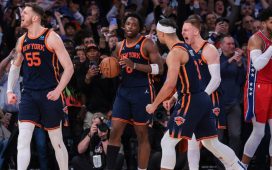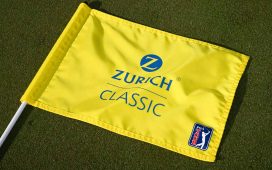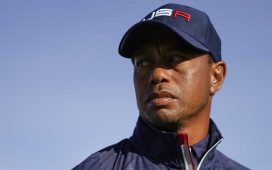So, how can players use a greens book to their advantage without making themselves pace-of-play pariahs?
It’s pretty simple, says John Wood, a veteran PGA Tour caddie who carries for Matt Kuchar.
“As Phil alluded to,” Wood says, “you can start gathering information the second you hit the green, while the other players are hitting or as you’re walking up.”
It is, Wood says, “pretty easy to get a basic understanding of the putt before you even bend down to mark it.”
On the flip side, “If you wait until you’ve marked and read the putt traditionally with your eyes and feet, and only then check the greens book, it will slow things down, especially if the book and your eyes are telling you contrary things. Then you’ve almost got to start over and figure out which one is right.”
And that’s just wrong.
Pace-of-play problems have many causes. But as Columbia University professor (and longtime USGA consultant) Lou Riccio points out in his book, “Golf’s Pace of Play Bible,” everything backs up from the greens, which are the only places on the course where the group ahead of you has no influence on your pace.
On the putting surfaces, it’s all up to you. You can proceed with haste, or plod along.
And as a matter of polite comportment, you shouldn’t make anyone stand around and watch as you study a text like a Talmudic scholar. Or Bryson DeChambeau.
In an incident at this year’s Northern Trust that has since gone down in viral infamy, DeChambeau took 2 minutes and 26 seconds reading the green (and a greens book) before striking an eight-foot putt. That he didn’t scare the hole brings to mind another question about greens books: Do they even help players drain more putts?
According to Riccio’s colleague, Mark Broadie, a Columbia professor and golf-stats guru, the evidence on the PGA Tour does not point one way or the other.
Green-reading books have been commonplace on Tour for at least a decade, but over that period make-percentages on Tour have largely remained static. And while they’re higher today than they were 20 years ago, that change, Broadie says, stems largely from improved green conditions.
“I don’t think that you can conclude from this that green books have or have not affected scoring,” Broadie says.
In Broadie’s view, the books are much like other green-reading technology: They might help a golfer who is not good at reading greens. But “for a player who already is a good green reader, there isn’t much to be gained.”
And for a player who doesn’t employ the books responsibly, there is much time to be lost.









